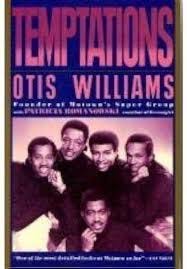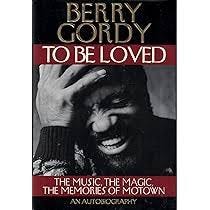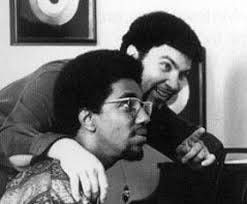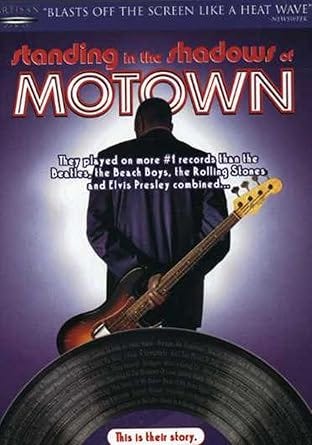"Ball of Confusion (That's What the World Is Today)" by the Temptations (1970)
My favorite protest songs from the 60s and early 70s
Welcome, everyone, to the ninth post in this series about my favorite protest songs from the sixties and early seventies.
I’ve been trying, from among my list of favorites, to present a variety in terms of artist, style, and message. So far we’ve heard:
“Blowin’ in the Wind” by Bob Dylan (1963)
“Masters of War” by Judy Collins (1963)
“Eve of Destruction” by Barry McGuire (1965)
“For What It’s Worth (Stop, Hey What’s That Sound)” by Buffalo Springfield (1966)
“Gimme Shelter” by the Rolling Stones (1969)
“Sweet Cherry Wine” by Tommy James & the Shondells (1969)
“Give Peace a Chance” by the Plastic Ono Band (1969)
“Big Yellow Taxi” by Joni Mitchell (1970)
I’ve also sent you Jackie R’s post sharing a song that makes fun of protest songs, as well as NickS’s post asking “What makes a good protest song?” in which he gives his own list of favorites — and where the Comments section has a discussion about this topic, which you are welcome to join.
Please note: I do make mistakes sometimes, as there’s a lot of detail in these posts, and also because sources sometimes disagree. Please don’t hesitate to let me know if you see any errors, as I want to get things right — and I know some of you have seriously deep musical knowledge.
On with the show! Today I’m pleased to present another rather unique protest song in terms of its theme, and oh what incredible musicianship.
Protest song of the day
So far, all of the protest songs I’ve shared with you have three obvious characteristics:
Stellar songwriting— we’re talking songwriting greats Bob Dylan, P.F. Sloan, Stephen Stills, Keith Richards, John Lennon, and Joni Mitchell
Masterful performances by experienced singers and musicians — and in case you didn’t know, perhaps the least known, Barry McGuire, was a hit-making singer-songwriter with the New Christy Minstrels before recording “Eve of Destruction”
Expert production — “Give Peace a Chance” was recorded in a hotel room and “Eve of Destruction” was a demo, but even with those two anomalies we’re talking state-of-the-art production techniques to ensure optimal broadcast quality.
Today’s song, “Ball of Confusion (That's What the World Is Today)” by the marvelous Temptations, also conforms with these three characteristics — as you would expect, having issued forth from the Motown hit-making juggernaut.
But in researching this song I found some intriguing explanations for why Motown was so consistently successful in creating hits, explanations that I suspect might also help us understand why all of these protest songs became standards during that time period and why they continue to be valued and esteemed today.
The first explanation, offered by the co-founder and last surviving original member of the Temptations, Otis Williams, is that the head of Motown, Berry Gordy, was himself, first and foremost, an experienced songwriter.
Otis revealed in an interview that, “Being a creative person, [Berry] was very into songs because that’s what he was really noted for, because he was a songwriter first. Because he wrote songs for Jackie Wilson and Marv Johnson and Barrett Strong. And so I guess he was kind of partial to the producers and to the songwriters to make sure that whatever was being produced at Motown, it was done with the right ingredient, with the right kind of a song structure, which he always stressed.”1
Berry also had a very definite approach to melody. “He also stressed that the melody would be very simple, whereas even a child could hum it. So he would stress as simple as you could keep it, the more mass appeal it would have… Most cases when you look at the Top 10, records basically are very simplistic and have that mass appeal.”
The third ingredient Berry emphasized, according to Otis, was “make sure that the lyrics had meaning, and where people could really identify and say ‘Oh yeah, I know what they’re talking about. I’ve lived that. That’s touched me before.’”
The lyrics for this particular song, surprisingly, turned out to be a challenge at first for the highly experienced Temptations. As Otis wrote in his autobiography, Temptations (above), “In 1970 we had a Top Five hit with ‘Ball of Confusion,’ a very upfront political statement that was relevant when Tina Turner covered it in 1984 as it was then. When Norman first showed us the lyrics, we were wondering how we were ever going to get all those damn syllables in one line. It reminded me of one of Bob Dylan’s songs, ‘Subterranean Homesick Blues.’ Of course today lots of people know the song by heart, but the first time we looked at ‘evolution, revolution, birth control, sound of soul, shooting rockets to the moon, kids growing up too soon,’ we stopped in our tracks. Fortunately, Dennis [Edwards] had a real fast tongue.”
Berry Gordy himself offered a different and quite interesting take on the success of the song in his autobiography, To Be Loved: The Music, the Magic, the Memories of Motown (1994) (above). He emphasized the influence of the surrounding culture on Motown’s music at that time, and in particular on the translation of that ‘spirit’ into song by the extraordinarily talented songwriter and producer Norman Whitfield:
“As the new decade was beginning, the changes happening in society inspired our music. Norman Whitfield and Barrett Strong’s songs captured the spirit of this era… The production of the Tempts’ ‘Ball of Confusion (That’s What The World Is Today),’ with its electrifying, yet melodic tracks, was pure Norman [on the right in the photo below]... Norman was like a madman. He continued to keep the Tempts on top with songs like ‘Runaway Child, Running Wild,’ ‘I Can’t Get Next to You’ and ‘Psychedelic Shack.’ Norman’s great versatility, his edgy, raw street energy always thrilled me. He ultimately amassed a body of work that I think makes him one of the most important producers of his time.”
[Just to keep you excited and coming back for more, please note that we will be hearing another of Norman and Barrett’s protest songs in an upcoming post.]
Yet another important factor Berry and Otis didn’t mention, no doubt because it was taken for granted inside the company, was the virtuosity of the backup musicians who played on this and other Motown hits, collectively referred to as the Funk Brothers.
If you haven’t seen it, you will want to watch the excellent documentary about them called Standing in the Shadows of Motown. They were the equivalent of the Wrecking Crew in Los Angeles and Booker T. and the M.G.’s in Memphis during that time period — musicians with the chops to play anything, anytime it was needed, with precision, passion, and grace.
Those of us who grew up in the sixties know about Motown’s extremely high production values and its parade of Top 10 hits, but what became apparent to me in researching this post is how we cannot assume that younger generations are aware of this unparalleled treasure trove of soul music.
This fact really came home to me when I viewed seven ‘reaction videos’ to “Ball of Confusion” on YouTube. In case you haven’t seen any of these, reaction videos involve one or two people watching a song video (which is projected onscreen so you also get to see what they’re watching) and reacting facially to it as it plays, and usually giving verbal reactions to the song afterwards.
One might be inclined to dismiss these videos, but that would be a mistake as they are introducing whole new generations of younger viewers to songs from the 20th century — and creating brand new audiences for them. An important public service, in this music lover’s opinion.
Of the ones I watched, I particularly enjoyed the videos of Bizmatic, JMBOY, and Jaybriel Akoi for their observations and insights on “Ball of Confusion”:
the song is “wow,”, “amazing,” “dope”
it is “incredibly political” and “insanely inspiring”
the song is even more relevant today, describing both the problems and the pervasive and widespread confusion people are feeling about everything — it’s “speaking the truth”
the production was immaculate and the “full package,” including the instrumentation, meaningful lyrics, great vocals, the walking bass that’s driving the song, and the confusion reflected in the structure of the song with voices coming in and out.
Right on, guys.
They also voiced their agreement with the rankings that the song achieved, reaching #3 on the Billboard pop chart, #2 on the R&B chart, and #7 on the UK singles chart, as well as #24 for the entire year.
While you listen to the song, look out for the reference to one of the protest songs I covered earlier, “Eve of Destruction,” and let me know in the comments what you think they mean by the refrain “And the band played on.”
Here are the Tempts performing “Ball of Confusion,” complete with their renowned choreography — or if you want to just listen to the song, that’s at the top:
Song credits
Songwriters - Norman Whitfield and Barrett Strong
Producer - Norman Whitfield
Temptations:
Dennis Edwards - lead and backup vocals
Eddie Kendricks - lead and backup vocals
Paul Williams - lead and backup vocals
Melvin Franklin - lead and backup vocals
Otis Williams - backup vocals
Musicians:
“Fresh Air” interview with Otis Williams, WHYY (NPR), September 15, 1988.









"...and the band played on..."
The song addresses practically every social and political issue of the times in a name-check style Billy Joel used later with "We Didn't Start The Fire". But it was aptly named and still relevant to our time (both the front and bracketed title), and Whitfield used all of the group's voices considerably well- bass singer Melvin Franklin was used very uniquely as a musical period for the others' sentences.
Nice one, Ellen! And what a terrific song - I'm not sure what TV show that YT clip is from, but it seems that they're singing live (unusual when lip-synching was the norm) over a recorded backing track, and what a performance!
As for ". . . and the band played on. . .", I can see two different interpretations. It could be "same old same old" despite all the troubles in the world, or it could be that in the face of all this confusion, music remains a healing/unifying power as ". . . the band plays on." I prefer the latter!